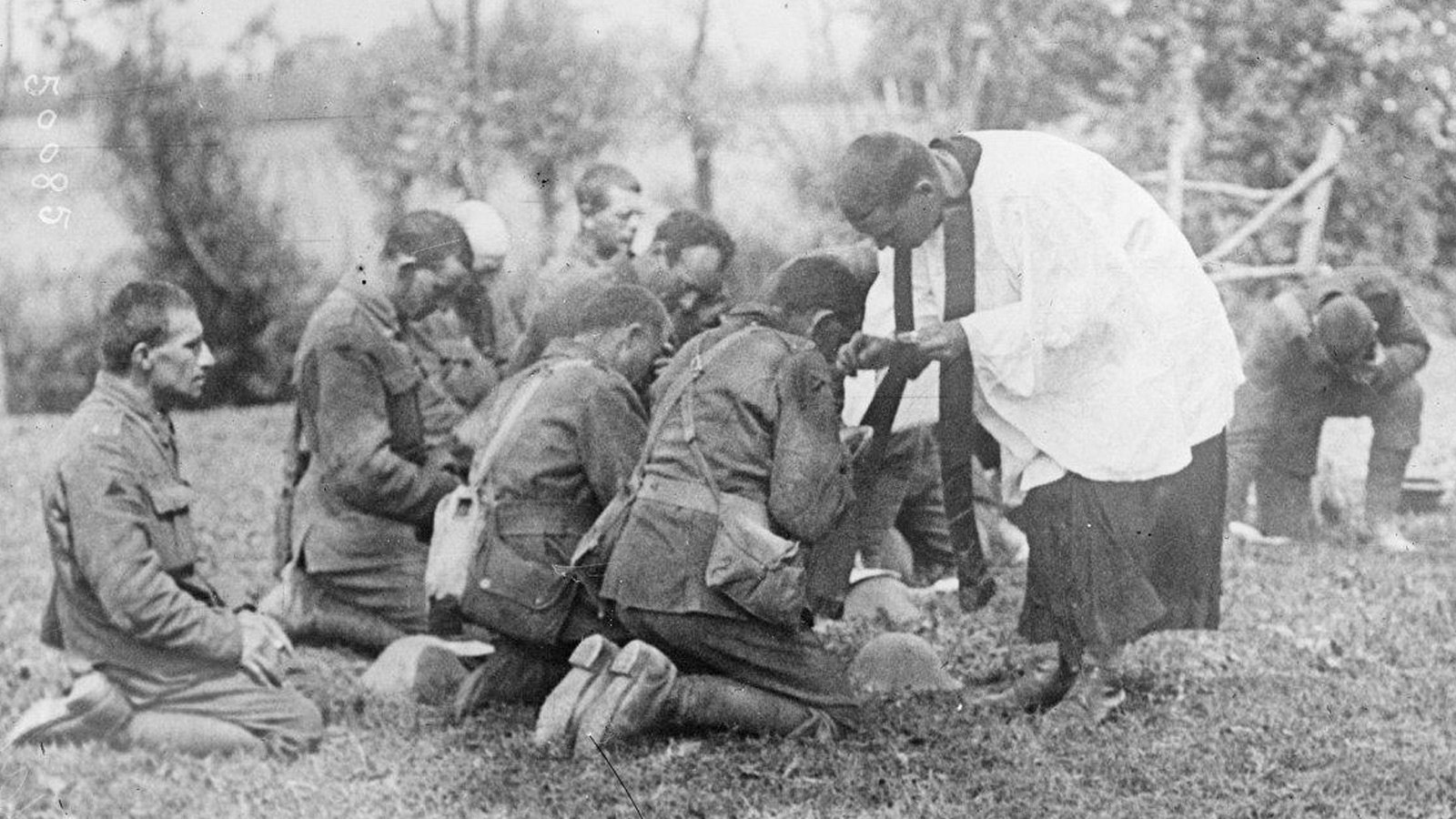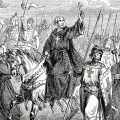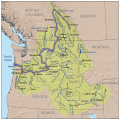
During the first part of the twentieth century, the United States continued in its efforts to assimilate American Indians into an English-speaking, Christian European culture. Traditional American Indian religious practices were oppressed and discouraged as barriers to this assimilation. Briefly described below are some of the events of 1917 related to Indian religions.
Native American Church
The Native American Church arose in the late nineteenth century as a pan-Indian religious movement. It incorporated many Christian elements as well as traditional Indian elements. The difficulty that the church encountered is that it uses peyote as a sacrament. In 1917, many non-Indians considered peyote a kind of intoxicant and it was therefore considered detrimental to Indian health and industriousness. The war against the Native American Church took a two-pronged approach, one that focused on peyote and one that focused on the church, portraying it as non-Christian and a barrier to the assimilation of Indians into non-Indian culture.
The media continued to label the Native American Church as a “cult” and an article in the Denver Post reports that
“to get a better hold on the victims, the peyote peddlers have lent a religious tone to the ceremony of eating the drug, so that the peyote is worshipped in a semi-barbaric festival before the orgy is held.”
In Utah, the state pharmacist found that peyote contains an alkaloid and recommended that it be placed on the list of prohibited narcotics. This led to the passage of a state law prohibiting the use of peyote.
In Colorado, the National Mothers Congress, the Parent-Teacher Association, the Women’s Christian Temperance Union, the Ministerial Alliance, and the Women’s Clubs backed a bill to stop peyote use by Indians. The state passed a law prohibiting the use of peyote. Sam Lone Bear (Sioux), an active peyote proselytizer, was arrested for violating the law and spent 15 days in jail.
Nevada passed a law prohibiting the use of peyote.
In Taos, New Mexico, the Pueblo Governor ordered a raid on a peyote meeting. A number of ceremonial items were confiscated and a fine of $200 was assessed.
In Colorado, the Native American Church was introduced to the Ute by Long Bear (also known as Sam Loganberry or as Cactus Pete).
Traditional Ceremonies
In Montana, the Northern Cheyenne again requested that they be allowed to hold their Willow Dance. They told the Indian agent that they would allow the agent and any other government employee to attend. The Commissioner of Indian Affairs, however, refused permission for the ceremony.
In Montana, the new superintendent for the Fort Peck Reservation addressed his concerns over Indian dances by stating:
“(a) I recommend the policy of repression and at the same time instruction to show the uselessness of these practices. (b) No limitations are placed on returned students attending the infrequent dances.”
In Washington, the Indian agent denied the Lummi permission to celebrate their treaty with the United States with traditional dances. They danced anyway and several Lummi were arrested. Both Lummi elders and civic leaders from nearby Bellingham petitioned the Commissioner of Indian Affairs to overrule the Indian agent.
In New Mexico, Hosteen Klah, a Navajo medicineman and berdache, took Franc Newcomb, a trader’s wife, to a Nightway ceremony. After the ceremony, she attempted to draw from memory the designs from the sandpaintings which were used in the ceremony. She was unsuccessful and Klah sketched them for her in pencil. Newcomb then made these into watercolor reproductions and hung them in her bedroom so that the other Navajos would not be offended. After seeing that no punishment occurred, Klah then did an additional 27 paintings for her.
In Oregon, Klamath members of the Indian Shaker Church disobeyed a number of Bureau of Indian Affairs regulations. They were ordered to close their meetings by ten o’clock at night and stop using incantations, bells, and brushing. They were reminded “that Shakers could participate in no practice that hindered Indians’ thrift and industry.” The Shakers declined to cooperate with these rules.
Christian Missionaries
In Wyoming, the Episcopalians established Saint Michael’s mission and school on the Wind River Reservation to serve the Arapaho. The mission encouraged Arapaho culture. In her book Arapahoe Politics 1851-1978: Symbols in Crises of Authority, anthropologist Loretta Fowler reports:
“The school complex was designed in the form of a camp circle. Pupils dressed in beaded Indian dress on special occasions, and teachers occasionally also wore Indian-style clothing given them by their students’ families. To the government employees’ horror, the mission staff was lenient toward peyote and sanctioned the Sun Dance.”



Hi. I am interested in learning more about my Cherokee heritage. My great great-grandmother was supposed to have been a full-blooded Cherokee. I am also researcging the Cherokee religion for a reaearch paper. I need 10 reliable sources. I have 4 books. I would like to cite a couple of articles here. I need the names of the author and why they know what they know about the subject written about. Like profession, being a Cherokee, or some other credential. And what is this website, where do the articles com from, How are you verifying the information? Thank in advance.